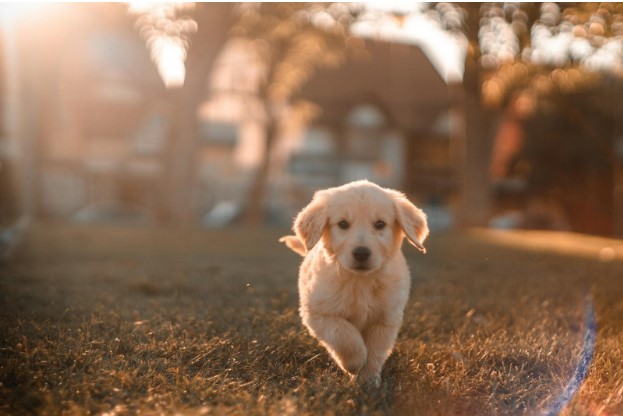Training a dog can be an incredibly rewarding experience, strengthening the bond between you and your furry companion. However, training a stubborn dog can sometimes feel like an uphill battle. Whether your pup is strong-willed, easily distracted, or just plain stubborn, there are effective strategies you can employ to achieve success in training. In this comprehensive guide, we’ll explore expert tips and techniques to help you train your stubborn dog effectively.

The Impact of Professional Dog Training
Professional dog training can have a transformative impact on both dogs and their owners. Whether you are looking for experts In Frisco or any other place, trainers with expertise in canine behavior and training techniques can assess a dog’s individual needs, identify underlying issues, and create tailored training plans. These plans often include positive reinforcement techniques, clear communication strategies, and gradual exposure to various environments and stimuli. Beyond teaching basic commands, professional trainers can address behavioral challenges such as aggression, fear, or separation anxiety.
Moreover, they provide invaluable guidance and support to owners, empowering them with the knowledge and skills to continue training effectively at home. The structured approach of professional training not only improves a dog’s obedience and behavior but also strengthens the bond between dog and owner, fostering a harmonious and fulfilling relationship based on trust and mutual understanding.
Understanding Stubbornness in Dogs
Before diving into training strategies, it’s important to understand why some dogs may exhibit stubborn behavior. Dogs are individuals, each with their personalities, temperaments, and motivations. Stubbornness in dogs can stem from a variety of factors:
Breed Traits: Certain breeds are known for their independence and stubborn streaks. For example, breeds like Shiba Inu, Siberian Huskies, and Bull Terriers are often described as stubborn due to their strong wills and independent natures.
Lack of Motivation: Some dogs may appear stubborn because they lack the motivation to comply with commands. This could be due to a lack of clear communication, inconsistent training, or insufficient rewards.
Fear or Anxiety: Dogs that are anxious or fearful may exhibit stubborn behavior as a coping mechanism. They may resist training out of fear or discomfort.
Past Experiences: Previous experiences, such as trauma or neglect, can influence a dog’s behavior and willingness to cooperate during training.
Understanding the root cause of your dog’s stubbornness can help you tailor your training approach to address underlying issues effectively.
Positive Reinforcement
Positive reinforcement is a powerful training technique that focuses on rewarding desired behaviors rather than punishing undesirable ones. When working with a stubborn dog, positive reinforcement can be especially effective in encouraging cooperation and building a positive association with training.
Use High-Value Rewards: Identify what motivates your dog the most, whether it’s treats, toys, praise, or playtime. Use these high-value rewards to reinforce desired behaviors and encourage compliance.
Consistency is Key: Be consistent in your use of rewards. Timing is crucial—reward your dog immediately after they perform the desired behavior to reinforce the connection between the action and the reward.
Avoid Punishment: Punishing a stubborn dog can lead to fear, anxiety, and further resistance. Focus on rewarding good behavior rather than punishing bad behavior.
Clear Communication
Effective communication is essential in training any dog, especially one that’s stubborn or independent. Clear, consistent commands and cues help your dog understand what you expect from them.
Use Clear Verbal Cues: Choose simple, distinct commands for different behaviors. Use the same cues consistently to avoid confusion.
Pair Verbal Cues with Hand Signals: Incorporate hand signals or gestures alongside verbal cues to reinforce understanding, especially for visual learners.
Be Patient: Stubborn dogs may take longer to grasp commands. Be patient, and avoid becoming frustrated or agitated, as this can hinder progress.
Set Realistic Expectations
When training a stubborn dog, it’s important to set realistic expectations and be patient with the process. Rome wasn’t built in a day, and training takes time, consistency, and repetition.
Break Tasks into Manageable Steps: Complex commands or behaviors can be overwhelming for a stubborn dog. Break them down into smaller, achievable steps, and gradually build up to the desired behavior.
Practice Regularly: Consistent training sessions, even if they’re short, are more effective than sporadic, lengthy sessions. Aim for multiple short sessions throughout the day to reinforce learning.
Celebrate Progress: Celebrate small victories along the way. Acknowledge and reward incremental improvements to keep your dog motivated and engaged.
Create a Positive Training Environment
The training environment plays a significant role in your dog’s receptiveness to learning. A positive, distraction-free environment can enhance training sessions and improve focus.
Minimize Distractions: Choose a quiet, familiar space for training sessions to reduce distractions. Turn off TVs, and radios, and minimize foot traffic during training.
Use Controlled Environments: Start training in controlled environments before gradually introducing distractions. For example, practice commands indoors before moving to outdoor settings.
Be Mindful of Timing: Choose times for training when your dog is alert and receptive, such as after exercise or meals. Avoid training when your dog is tired, anxious, or overly excited.

Training a stubborn dog requires patience, consistency, and a deep understanding of your dog’s individual needs and motivations. By employing positive reinforcement, clear communication, realistic expectations, a positive training environment, and seeking professional guidance when necessary, you can overcome stubbornness and cultivate a well-behaved, obedient companion. Remember, training is a journey that strengthens the bond between you and your dog—enjoy the process and celebrate every step forward!






